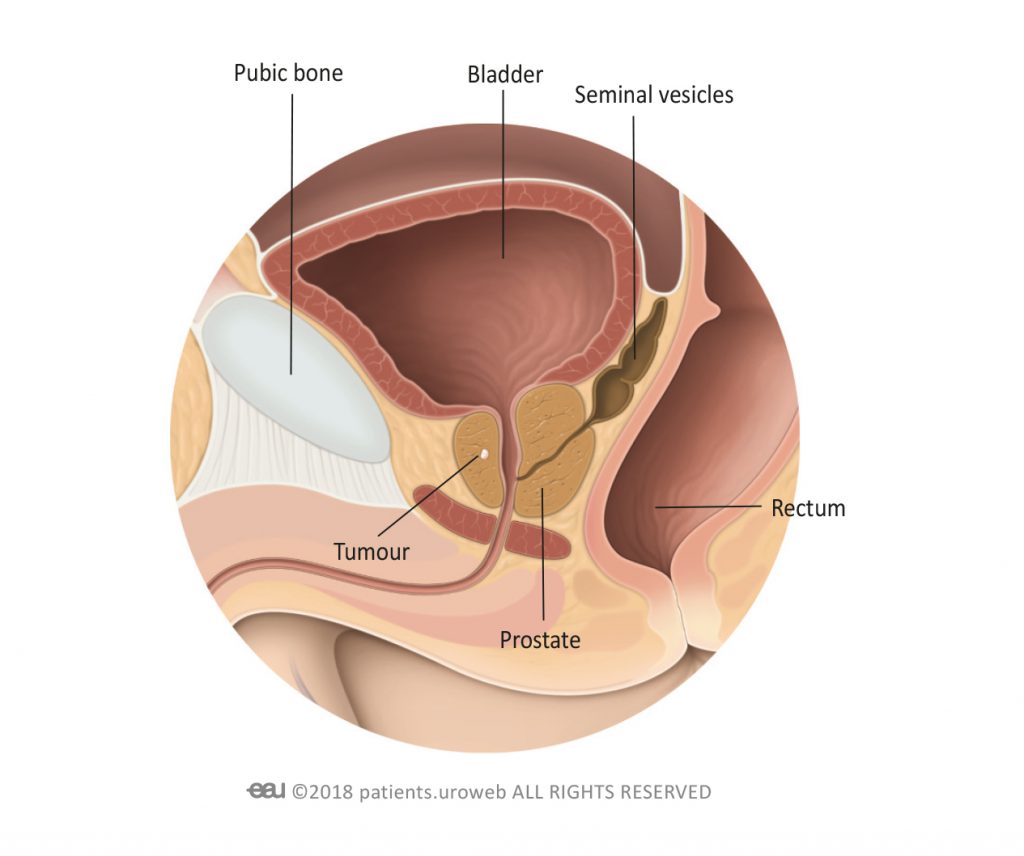Table of Contents [hide]
What is localised prostate cancer?
Localised prostate cancer refers to a tumour which is limited to the prostate and has not extended to other parts of your body. It may be a T1 or T2 tumour, depending on its size and where it is located in the prostate.
T1 means that the tumour is too small to be felt during a digital rectal examination (DRE) or seen on a scan. T1 tumours are confirmed with a biopsy and assigned an a, b, or c based on the analysis of the pathologist.
A T2 tumour means that prostate cancer can be felt during a DRE, but is still limited to the prostate. Your doctor will also assign an a, b, or c to this stage, depending on the size of the tumour and whether it is in one or more lobes of the prostate (Fig.1 and 2).
Treatment
If you are diagnosed with localised prostate cancer, your doctor can recommend treating the cancer with conservative management, radical prostatectomy, radiation therapy, or new experimental techniques. Each treatment has its own advantages and disadvantages. The choice depends on your individual situation.
This section describes the different treatment options which you should discuss with your doctor.
This is general information, which is not specified to your individual needs. Keep in mind that individual recommendations may depend on your country and health care system.



